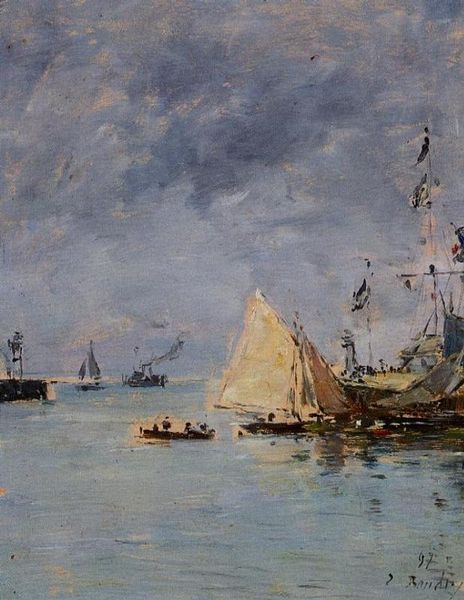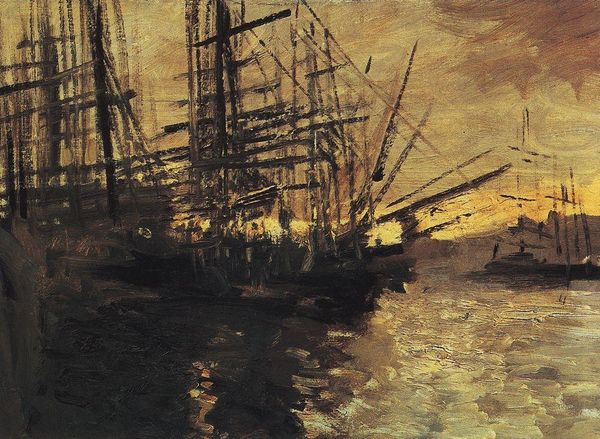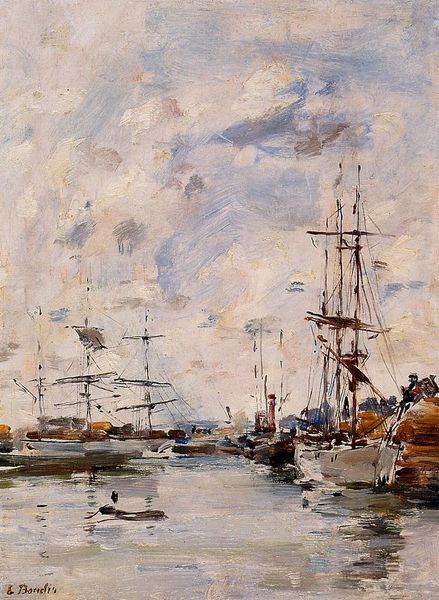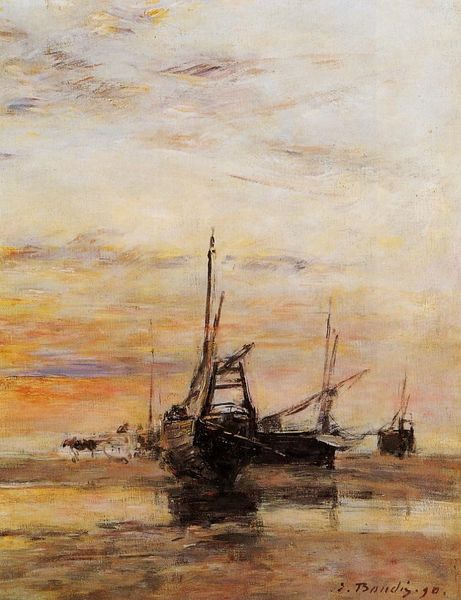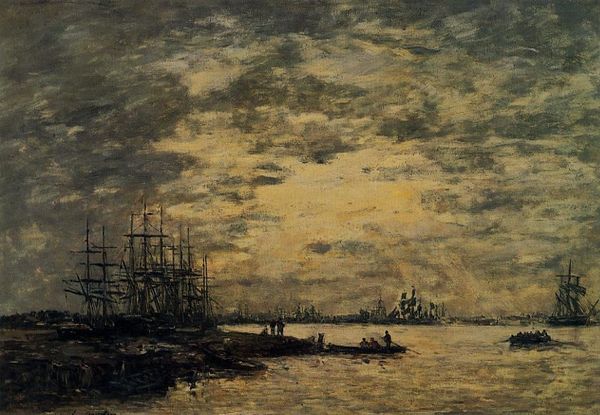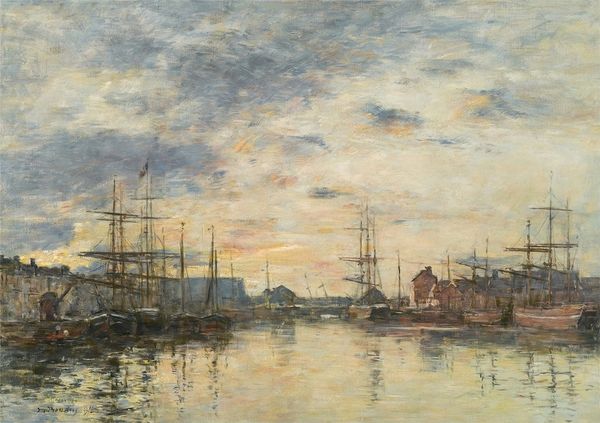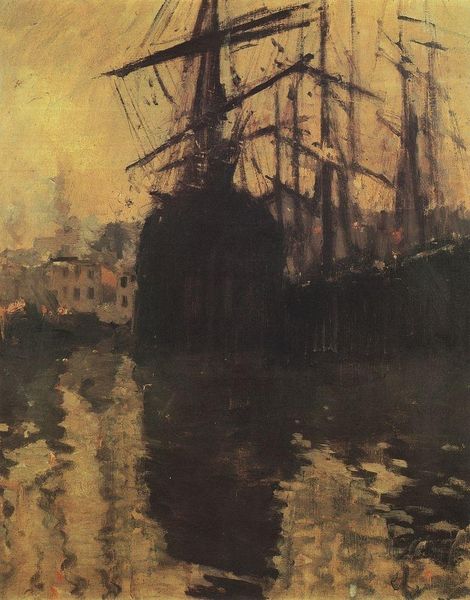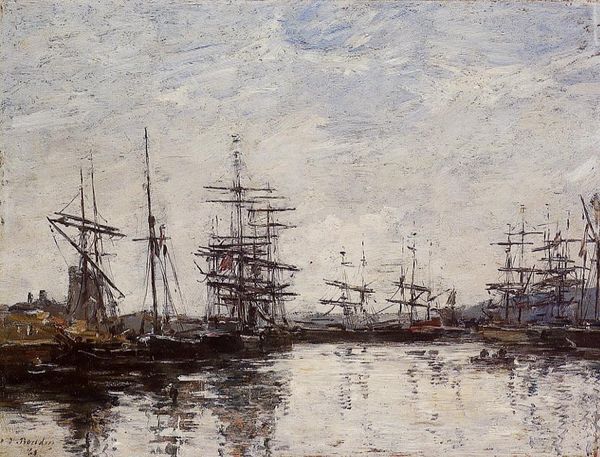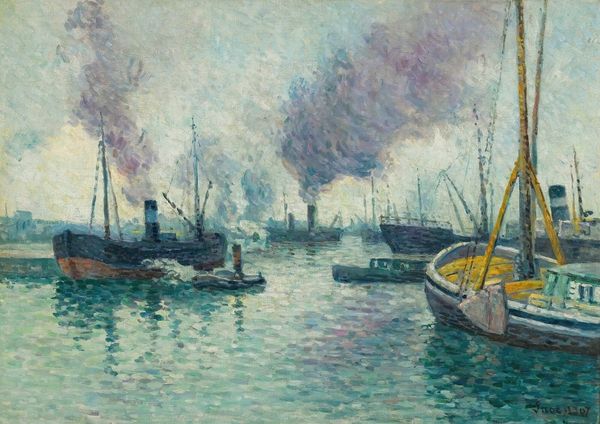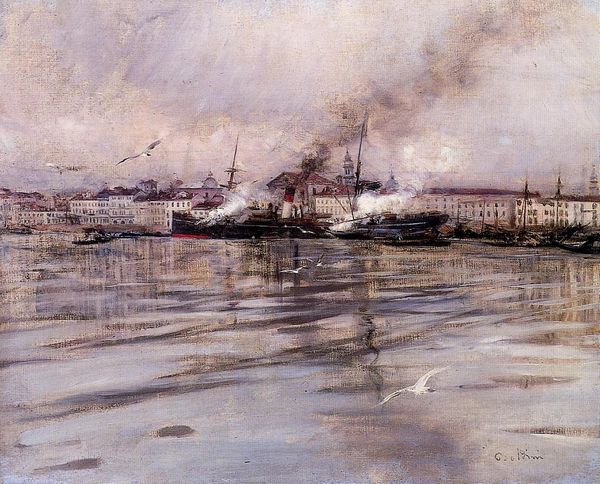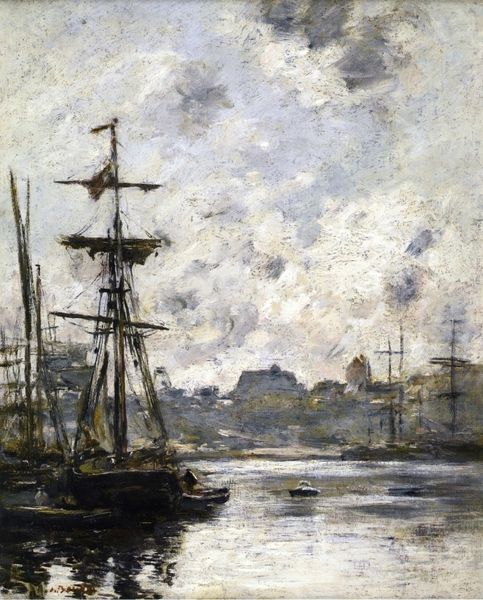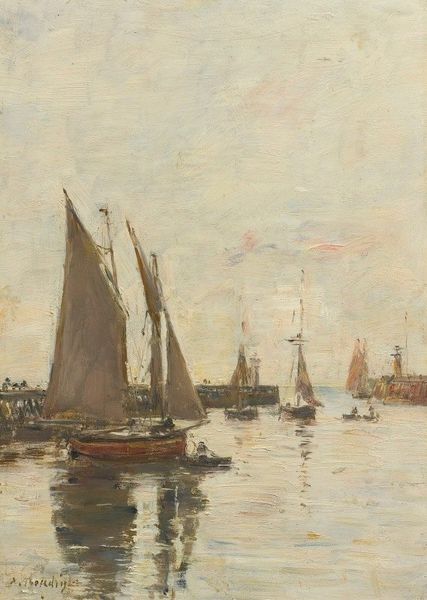
Copyright: Public domain
Editor: Here we have Konstantin Korovin's "Port in Marseilles," created around 1890 using oil paints. It evokes such a somber mood. The impasto of the paint seems to mimic the density of the fog. What strikes you when you look at it? Curator: The visible brushstrokes and thick layering of paint, as you noted, become key to understanding Korovin's engagement with materiality. Notice how the boats aren't just representations; they are built up through a process. The application becomes a record of labor, echoing the actual work happening at the port. What sort of labor do you envision happening? Editor: Well, obviously sailors and dockworkers. Hauling cargo, maintaining the ships. I hadn't considered how the painting itself reflects that manual labor. Curator: Exactly. Now, consider the socio-economic implications of a port city like Marseilles. The port wasn't just a picturesque view. It was a vital engine for trade, resource extraction, and ultimately, capital accumulation. Editor: So, the beautiful scene belies a whole system of industry and economics. Does the “impressionistic” style further remove it from being "real", masking it in some way? Curator: Perhaps, but by showcasing the *making* of the work, we have an honesty about what and how something is depicted, beyond only *what* it is. The visible effort to capture this port opens it up, revealing this nexus of exchange and manual work from a new perspective. Editor: It's interesting to see how a painting like this moves beyond just being aesthetically pleasing to becoming a sort of document of its time. Curator: Precisely, and appreciating its value requires acknowledging its place in the material world, in both creation and its depiction of labor and capital.
Comments
No comments
Be the first to comment and join the conversation on the ultimate creative platform.
